Logistics
Warehousing & Fulfillment
Transportation
Industries
Technology & Innovations
E-commerce
E-commerce Fulfillment Services
Lease & Maintenance
Semi Trucks
Logistics
E-commerce
Lease & Maintenance
Buy Used Trucks
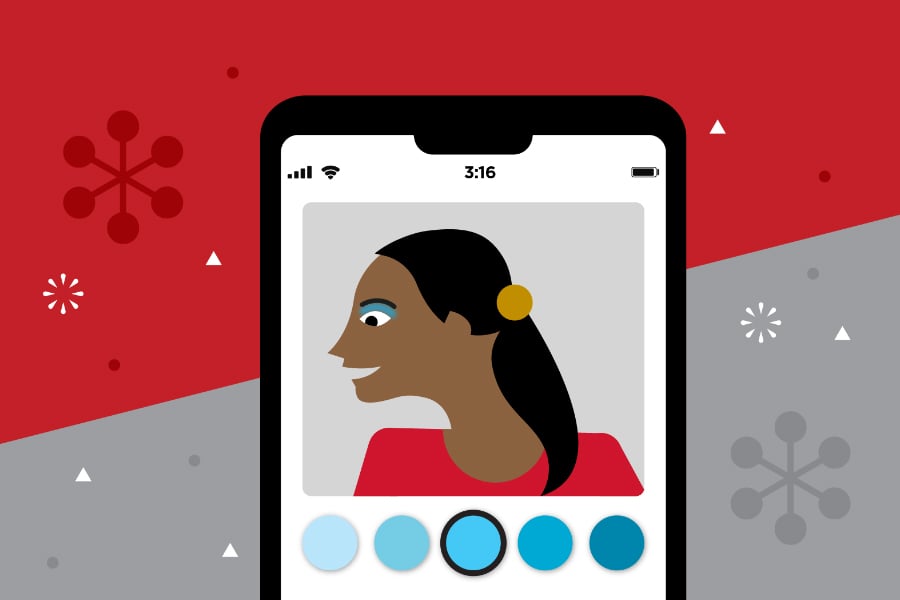
Updated on April 2, 2025
The beauty industry is a major legacy industry. Some of the most well-known health and beauty brands like Revlon, Estee Lauder, and Mary Kay were founded in the early 1900s, nearly a century ago!
What is new is the e-commerce beauty industry. Once reserved for physical shopping at big-name department stores, beauty and personal care shopping has evolved into an experience where the brick-and-mortar stores are no longer a necessity.
The good news is that online shopping has paved the way for beauty brands who wouldn’t have been able to get their foot in the door (pun intended) at larger retailers. The bad news? Consumers have found themselves with an overwhelming number of beauty products and beauty brands to choose from. Cosmetics brands now face a saturated industry, with a good amount of competition.
So, how can e-commerce beauty brands stand out from the crowd? For one thing, they’ll need to keep up with constantly changing trends to stay relevant with beauty shoppers.
In this article, we’re going to take a look at the current state of the beauty e-commerce industry and the most popular trends to pay attention to over the year.
The beauty industry in 2025
It’s a wonderful time to be in the beauty industry. Looking ahead, beauty e-commerce sales are projected to reach $338.9 billion by 2029, growing at an average annual rate of 8.4%.
While the beauty industry has been around for centuries, only recently are we seeing a more digital focus. Shopping online for beauty products has become the norm. New technology such as virtual try-ons, livestream shopping, and online consultations have continued to evolve, offering greater realism, faster processing, and seamless integration with popular platforms like Instagram, TikTok, and even emerging VR platforms, keeping consumers engaged and satisfied in the online beauty world.
Additionally, direct-to-consumer brands like Glossier, Colourpop, and The Ordinary have continued to innovate, introducing notable new products and partnerships throughout 2024 and into 2025. Emerging platforms like TikTok Shop have significantly influenced consumer buying habits, boosting brand visibility and sales.
While many online beauty brands have developed cult followings, beauty consumers remain highly open to trying new products. According to a 2023 study by PowerReviews, 35% of consumers reported that 26% to 50% of their online beauty purchases over the past year were products they had never tried before. Additionally, 31% of consumers indicated that new-to-them products accounted for 51% or more of their online beauty purchases in the same period. This means that while competition remains fierce, there’s plenty of opportunity to increase market share.
But in order to build a community and engage with new and existing customers, cosmetics brands will need to stay ahead of the game to stand out from the crowd.
10 Top beauty trends in e-commerce
1. Influencer marketing
As social media continues to be one of the biggest drivers of engagement for e-commerce, cosmetics brands are finding that working with beauty influencers is the ideal way to generate brand awareness and boost sales. Interestingly enough, beauty brand influencer partnerships won’t be fully dependent on the largest follower count. With micro-influencers, and increasingly nano-influencers, going viral almost every day, beauty brands are pairing with smaller, highly engaged creators over celebrities.
Why? Partnering with more relatable, niche accounts is a more authentic approach that drives greater engagement. A celebrity account may have four million followers, but more than half of those followers may not be interested in beauty products. Whereas a beauty-focused micro-influencer account may only have 10k followers, those followers are likely much more interested in beauty products than the celebrity’s account.
2. Augmented reality (AR)
All those Instagram and TikTok filters that can change your face shape or add a full face of makeup in one second? That’s augmented reality. In beauty e-commerce, it’s making waves. Why? Shopping for beauty products online is typically hit or miss. After all, how can you know how a shade of lipstick will truly look until it's actually in your hands (and on your lips)? This is where AR comes in.
Virtual try-on technology has become even more sophisticated in 2025, with hyper-realistic visuals, AI-driven personalized recommendations, and integration into immersive virtual reality (VR) experiences, enabling customers to better visualize products before they hit that purchase button. Brands like Lancome now allow customers to use live cameras, upload photos, or utilize immersive VR environments to try on makeup virtually, significantly enhancing the shopping experience.
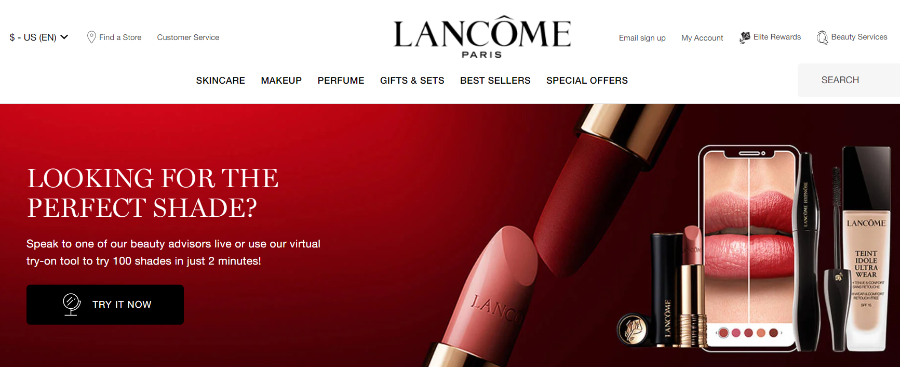
3. A focus on self-care
Beauty as self-care increased significantly during the stay-at-home orders of 2020, and this trend has continued to deepen into 2025, with a growing emphasis on mental wellness and holistic beauty practices. Consumers are turning to ritualistic skincare routines, self-care inspired steps, hydrating face masks, oils, and products with natural ingredients. Additionally, skincare and grooming products for men have significantly grown in popularity, reflecting changing attitudes and increased focus on self-care among male consumers.
In 2025, self-care remains an essential part of the beauty industry. E-commerce brands that aren’t embracing this trend will quickly fall behind when it comes to acquiring new customers and keeping old ones. Beauty brands should curate some products as self-care or nighttime ritual sets, similar to Tatcha’s skincare sets.
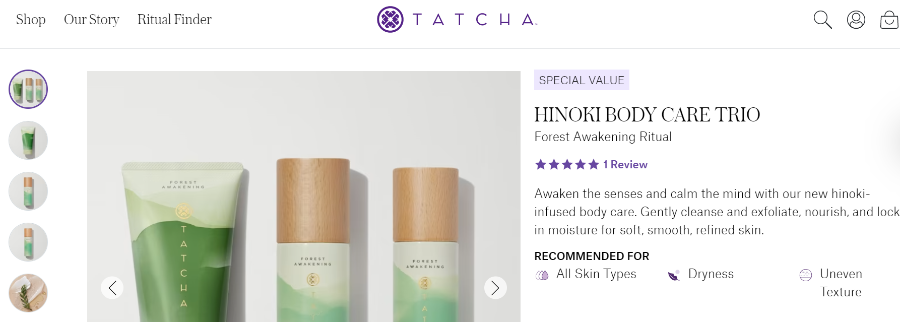
4. Subscription boxes
Beauty subscription boxes have been around for quite some time, and they aren’t going anywhere in 2025. With the ability to customize in relation to personal preferences and increased sustainability options, beauty boxes are perfect for consumers looking to find their new favorite products. Because they’re specifically curated, it takes pressure off the consumer having to dig through the site and read reviews to find the ‘perfect’ product.
E-commerce beauty brands who add a subscription channel to their business are not only giving their customers more personalized options but are also building recurring revenue into their business model.
5. Social commerce
With the rise of TikTok over the past few years, it’d be amiss for beauty brands to not actively use the app. Not convinced? #TikTokMadeMeBuyIt currently has over 65 billion views in 2025. Simply having a presence on the app can boost product discovery for beauty brands. But, that’s not all. TikTok offers a full suite of commerce solutions for businesses of all sizes, including enhanced shopping integrations and more sophisticated in-app checkout options.
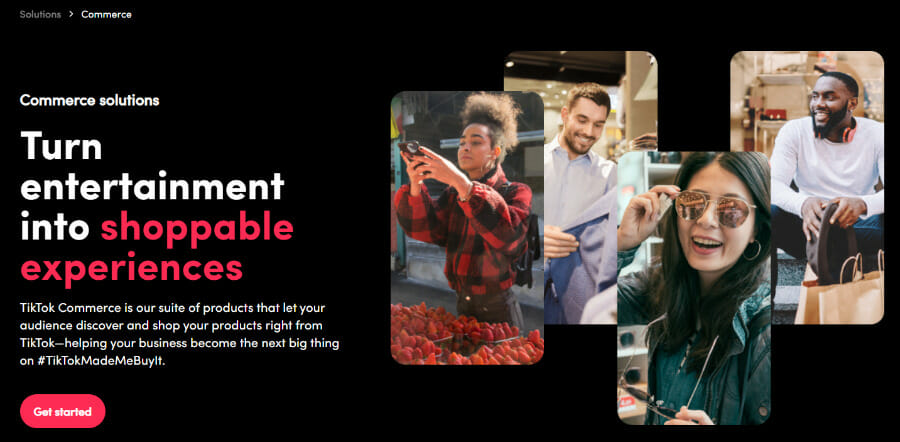
From in-app shopping to product links and video ads, beauty brands can seamlessly connect with potential customers. And the best part? They won’t ever have to leave the app – it’s a surefire way to meet your customers right where they are.
6. Sustainability
Historically, the cosmetics industry hasn’t been very eco-friendly. Small products shipped out in plastic packaging can cause massive amounts of waste each year. But, the industry is changing for the better. Many brands are beginning to invest in sustainable packaging, such as refillable containers, biodegradable packaging, and waterless products, for a more environmentally-friendly fulfillment strategy.
A more sustainable approach is not only great for the earth, it’s what consumers want. A 2025 report by Shorr Packaging revealed that 54% of consumers reported deliberately choosing products with sustainable packaging in the past six months. Not only that, but a 2024 PwC survey indicated that 80% of consumers are willing to pay more for sustainably produced or sourced goods, with an average premium of 9.7%. For beauty companies, it’s high-time to develop authentic sustainability initiatives in 2025.
7. Hyper-personalization
Beauty brands are uniquely positioned to offer hyper-personalized experiences for their customers. But what is hyper-personalization? Simply put, it’s using data and automation to create customized, personal experiences for customers that erase pain points and provide a frictionless experience.
For example, if a beauty shopper purchases a tub of moisturizer, the brand can trigger an automated email to go out around the time they’re likely to be running out of the product. Alternatively, brands can use behavioral data and historical purchases to curate a list of products that a customer might like.
Some beauty brands are even offering customized products according to skin-type, hair-type, age, lifestyle, environment, and more. Prose offers fully customized products for a personalized haircare routine (as long as their customer takes a quick quiz first). In 2025, advanced AI tools can now even analyze real-time skin conditions for hyper-tailored skincare recommendations.
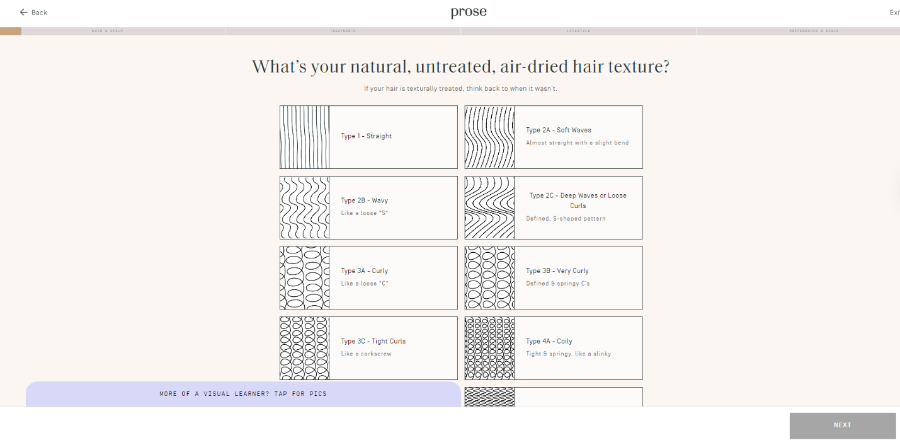
8. Loyalty programs
Another trend touching on personalization and seamless shopping experiences? Loyalty programs. A customer could be logging in to their account to discover a discount reward or open their latest order with a sample product surprise. Whatever the case, loyalty programs diversify the online shopping experience and channel engagement. In 2025, brands are integrating gamified rewards and direct in-app social commerce links to loyalty programs.
Not only this, but offering a loyalty program allows brands to track consumer behavior and ask for feedback from their top customers. This alone can help drive better business decisions in the long run. Plus, it shows your best customers that you care about their experience.
9. Expanding omnichannel offerings
Perhaps the most important beauty e-commerce trend is walking away from only utilizing digital channels and taking an omnichannel approach. Why? Beauty enthusiasts shop online and offline nowadays. They want the best of both worlds – a stellar online experience with opportunities to connect in-person. In 2025, we’re seeing plenty of D2C beauty brands embrace selling channels like partnering with beauty retailers, selling on third-party marketplaces, utilizing social commerce, and experiential retail activations.
When brands begin to broaden into an omnichannel strategy, the chances of engaging with the right customer at the right time are much higher. In such a saturated beauty industry, this is especially important for brands looking to offer something unique.
10. Continuing to create space for diversity and inclusion
From the consistent use of models who look exactly the same to foundation shades that don’t account for all skin tones, it’s no secret that inclusive beauty has not always been the norm. However, led by a generation of younger consumers, 2025 customers are demanding more diversity and inclusion. They want to see themselves within beauty brands, rather than a version of beauty that isn’t attainable.
In fact, over 60% of US consumers say they are inspired when beauty brands offer diversity within their marketing. Inclusive beauty is not just a trend, instead, it’s an approach that all brands should consider if they want to keep their customers satisfied.
The beauty industry: Looking forward
The most exciting thing about the beauty industry? Change is the only constant. From micro-influencers to augmented reality to clean products, there will always be new beauty e-commerce trends on the horizon. So, beauty brands might be wondering how they can possible keep up. Well, we’ve got some good news. The one thing that doesn’t change in beauty (and any e-commerce vertical, for that matter) is putting the customer first.
Our advice to e-commerce beauty brands? Build a community and focus on providing the best possible customer experience – every time. The sales will follow!